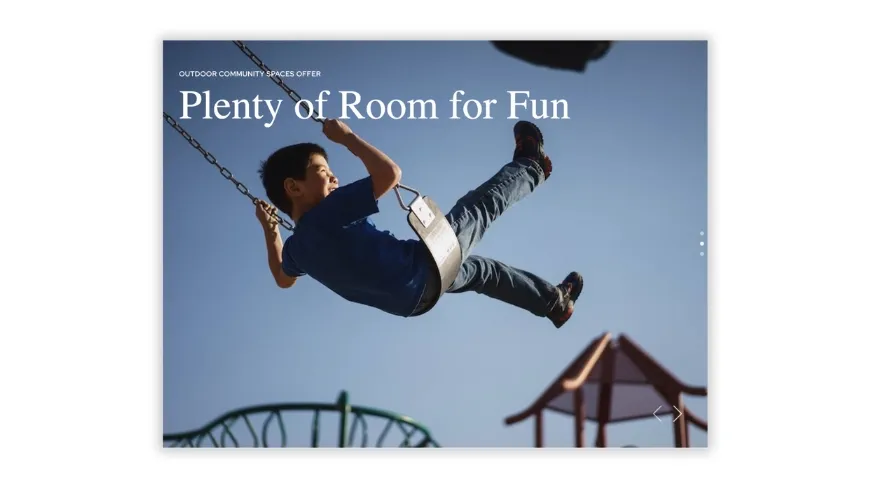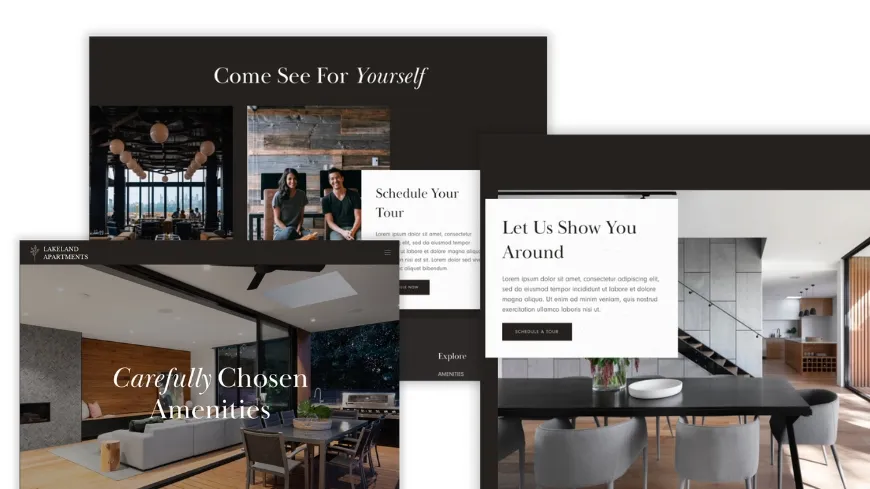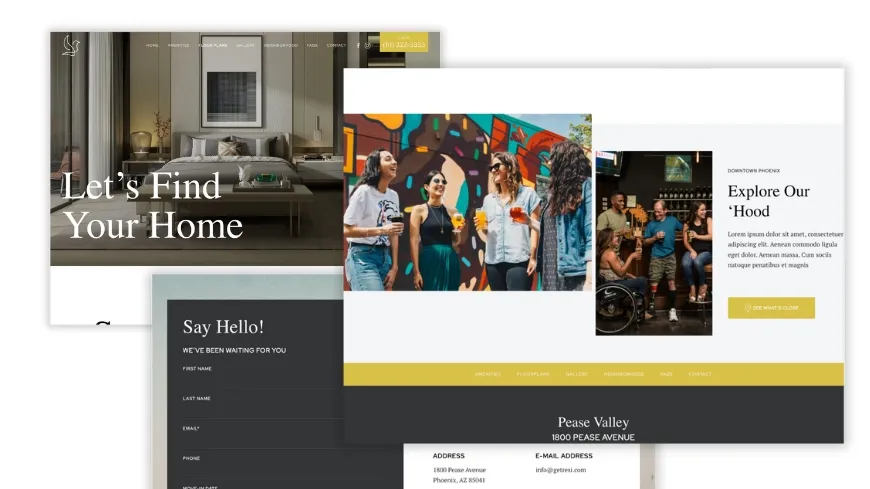Effective content and communication is a must today. At Resi, we believe in the strength of the narrative transportation theory as a tool for creating engaging content.
This framework revolves around the idea that if a story is engaging enough, readers can mentally transport themselves into the world of the narrative. For multifamily marketers, crafting stories that invite potential residents to envision themselves living and thriving in a community can be particularly powerful. By describing a day in the life at a multifamily unit or sharing resident success stories, marketers can effectively use this technique to create a strong emotional connection.

What elements make up an effective story?
The Narrative Transportation Theory suggests that people are more likely to be persuaded and emotionally engaged with a narrative when they are “transported” into the story world. For multifamily marketers aiming to leverage this theory effectively in their content, several key elements must be incorporated to ensure success:
Strong Narrative Structure
The story should have a clear beginning, middle, and end. The beginning sets the scene and introduces the characters; the middle presents challenges or conflicts; and the end provides resolution. This structure helps to draw the audience into the story, making them more receptive to the message.
Vivid Imagery and Descriptions
Utilizing descriptive language that evokes the senses can help the audience visualize the setting and events of the story. This can include detailed descriptions of the property, community events, or lifestyle possibilities that allow the reader to “see” themselves in the environment.

Relatable Characters
Characters in the story should be relatable to the target audience. For a multifamily community, this could be residents who share similar lifestyles, challenges, or aspirations as the prospective residents. Characters that reflect the audience’s demographic and psychographic traits can enhance the transportation experience.

Emotional Connection
The narrative should aim to stir emotions. This could be through storytelling techniques that evoke happiness, satisfaction, a sense of belonging, or even aspirational desires related to living in the multifamily community. Emotional engagement is a critical driver of narrative transportation.
Conflict and Resolution
Introducing a conflict or problem that the characters face and then providing a resolution not only maintains engagement but also demonstrates the value proposition of the multifamily property. For example, a story might describe a resident overcoming the challenge of remote work thanks to the community’s state-of-the-art co-working spaces.

Consistency and Believability
The story must be internally consistent and believable; it should not contain elements that break the narrative flow or contradict established facts or the audience’s understanding of the world. This also means avoiding over-exaggeration that could lead to skepticism.
Cultural Relevance
The story should align with the cultural background and values of the intended audience. This ensures that the narrative is appropriate and resonant, increasing the likelihood of transportation.
Interactive Elements
Especially in digital marketing, engaging the audience with interactive story elements such as clickable content within a story, video tours, or resident testimonials can enhance the immersion experience.

Clear Call to Action
After leading the audience through the narrative, it’s important to guide them towards a specific action, like scheduling a visit, signing up for a newsletter, or contacting the leasing office. This call to action should feel like a natural extension of the narrative journey.
Engaging Renters: Putting It Into Practice
Incorporating Narrative Transportation Theory into various aspects of marketing—like copywriting, photography, and other mediums—can significantly enhance the emotional and persuasive impact of the content. Here are practical examples showing how to weave narrative elements into these different mediums, enhancing engagement and conversion.

Copywriting
Do This:
- “Imagine starting your day with a warm cup of coffee on your private balcony, as the city wakes up around you.”
- “Meet Sarah and John, who found a lively community of young professionals and now enjoy weekend BBQs at the rooftop garden.”
Instead of This:
- “Our apartments feature private balconies and a rooftop garden.”

Photography
Do This:
- Use photos that capture residents genuinely enjoying community amenities, such as a group of friends laughing around a fire pit.
- Showcase a family day event with children playing and parents socializing, to emphasize the family-friendly environment.
Instead of This:
- Generic images of empty amenities or staged, unnatural resident interactions.
Video Marketing
Do This:
- Create a “day in the life” video featuring a resident who takes the viewer on a tour of the property, highlighting favorite spots like the cafe or gym, and ends with a testimonial about why they love living there.
- Produce testimonial videos focusing on personal stories, like a resident who moved from a different city and found a supportive community at the complex.
Instead of This:
- A straightforward video tour of the property without any personal engagement or storytelling elements.

Social Media
Do This:
- Post a series of “Story Sundays” where different residents share a personal story about a community experience or how the apartment complex has enhanced their lifestyle.
- Use Instagram stories to showcase a real-time event at the property, like a cooking class or a pool party, with residents sharing their experiences live.
Instead of This:
- Posting only promotional content or high-level features of the property without engaging stories or resident experiences.

Email Marketing
Do This:
- Send out a monthly newsletter that includes a “Resident Spotlight” section, where you tell the story of one resident’s achievements or community involvement.
- Feature a story about how the community came together to support a local charity event, highlighting the residents’ involvement and the positive outcomes.
Instead of This:
- Generic emails that only include updates about the property or reminders about rent and policies.
Blog Posts
Do This:
- Write a blog post titled “A Year at [Property Name]: A Resident’s Journey,” detailing a resident’s experiences and how the community has positively impacted their life.
- Feature guest posts from residents who write about their hobbies, experiences in the community, and tips for new residents.
Instead of This:
- Only posting blogs about apartment living tips or decorating ideas without connecting to personal resident stories.

Print Marketing
Do This:
- Design brochures that include narratives from current residents, describing why they chose to live there and what their day-to-day life is like.
- Use imagery and captions in brochures that tell a story about community engagement, such as photos from a recent event accompanied by quotes from participants.
Instead of This:
- Standard brochures that list amenities and floor plans without integrating any personal stories or resident testimonials.
By using these strategies, multifamily marketers can effectively apply Narrative Transportation Theory across all marketing channels, enhancing the way potential residents emotionally connect with the property and envision themselves as part of the community. This approach not only increases engagement but also fosters a deeper sense of belonging and satisfaction among residents.


